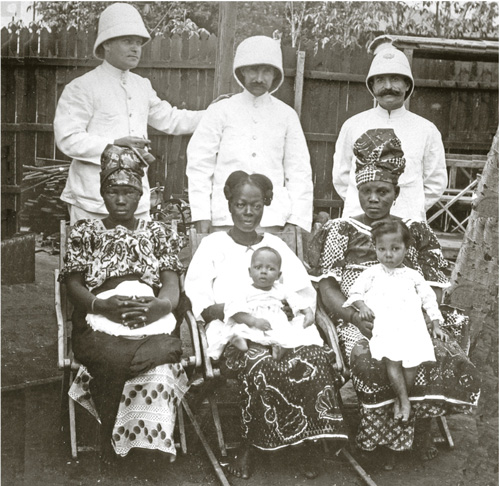Wooden carving of a “blolo bian” — a male spirit spouse from the
Baule peoples of the Ivory Coast, c. 1950s.
A part of the “After Spiritualism”
Exhibit, Fitchburg Museum of Art
February 8–June 7, 2020
So many questions…
- Where does this carved wooden figure come from?
- What does it mean?
- Why are there so many male statuettes like this one among the Baule peoples of the Ivory Coast in West Africa?
- Are these carvings of white people?
- Are they carvings done for white people — perhaps, tourists or foreigners interested in art and trinkets depicting “westernized elements?”
- When did these statuettes begin to emerge historically?
- What does their history of appearance (their historicity) tell us about their function within the Baule system of beliefs?
- What forms do they take as the years and decades pass?
A careful study of African art history can help us to understand a great deal about the modern world. The trouble is — to date — this is not widely understood or fully appreciated — even by “the experts” in African art. Simply put, the problem is this: while there is a great deal written about African belief systems and African aesthetics, when it comes to discussing selected works of African art, there is comparatively little detailed historical study of the concrete circumstances or specific context that conditioned its creation in the first place. All too often the field of “African Art History” often amounts to “African Art Commentary” — without the history. It is perhaps time to examine in depth the historicity of African art history.
One realm in which this is apparent is the discussions surrounding the “colonial art” of the Baule peoples in the central Ivory Coast and their striking elaboration of “blolo bian” and “blolo bla” figurines carved in wood. One recent characterization of these art forms states simply:
“These African art statues belong to the Baule, who refer to them as Blolo Bian (blolo man) and Blolo Bla (blolo woman). Blolo is simply a world invisible to common mortals and a mirror image of ours, it is a parallel universe, right beside the one of our normal sensory perception. There, behind the dividing membrane of air, which can almost be touched by stretched an arm out, the other side is peopled by spirits. The initial knowledge of ones otherworld mate usually comes from some sort of crisis in young adult life, normally of a sexual nature, such as sterility. The person facing the crisis would consult with a diviner (wunnzueyifue), and it would normally be found out that the problems are caused by the unhappiness or jealousy of ones neglected otherworld opposite. In these situations, the divination could reveal that it is necessary to represent this other world person by a carved statue, to which offerings of food or money could be made on a regular basis and that it is necessary to consecrate one night a week to this blolo person by sleeping alone.:”
This historical origins of the blolo bian and blolo bla figures in the Ivory Coast need to be explored in greater depth by historians, anthropologists and art-historians alike.
The social context of generating blolo bian carvings.

How might the existence of a “spiritual spouse” affect a Baule woman’s relationships with the other significant males in her life?
For further information on the spirit spouses among the Baule see:

The Self and the Other: Personhood and Images Among the Baule, Cote D’Ivoire, Philip L. Ravenhill (Monograph Series No 28, 47 pages, University of California Museum, 1 August 1994).
and:
Dreams and Reverie: Images of Otherworld Mates Among the Baule, West Africa by Philip L. Ravenhill
as well as:
and the
Special Issue on Baule Aesthetics. 5.) Baule statuary art: Meaning and Modernization 6) Beauty in the Eyes of the Baule: Aesthetics and Cultural Values. Working papers in the traditional arts; no. 5-6
The foundational work on Baule art forms and aesthetics has been undertaken by Dr. Susan M. Vogel:
Some other “colon” statuettes representing other-world spirit spouses:

and

as well as:

and

Consider the context of other-world spouses:
More work on the history and art of the Baule needs to be done to understand the meaning and historical significance and social origins of this substantially unique art form in Africa.
See related:
- “The Precolonial Baule: A Reconstruction,” Cahiers d’études africaines, vol. 18, n°72, 1978. – Persée
- Online Research & Teaching with Africa Maps: Tips, Techniques, Examples & Resources
- African Map Circle – Digital Resources
- An Integrated Art, Historical Map and Photographic Collection for the Study of African Culture
As well as:










